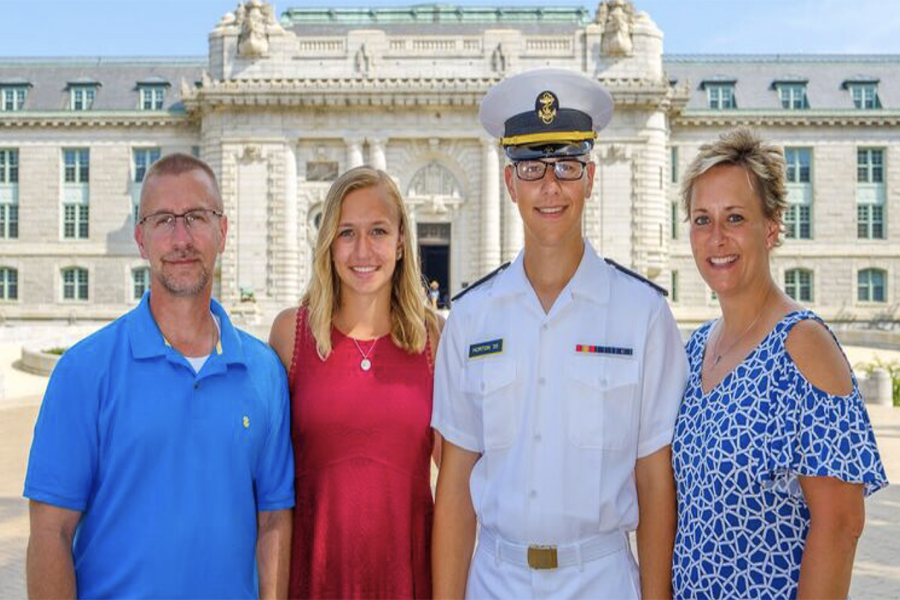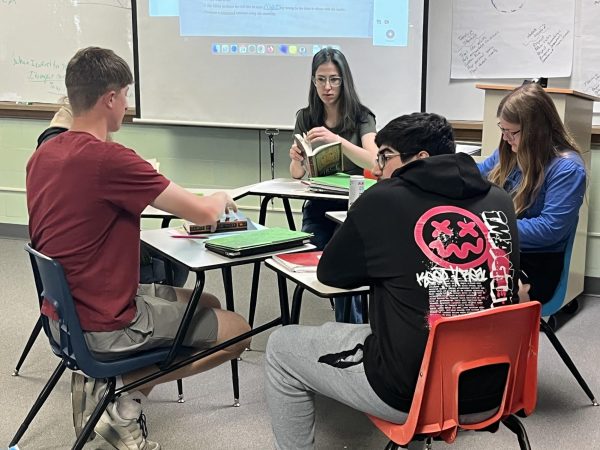United States Naval Academy
The United States Naval Academy is one of the five United States Federal Service Academies. The Naval Academy is located in Annapolis, Maryland and was founded in 1845. Students, called Midshipmen, graduate with a 4 year degree and are commissioned into the United States Navy or Marines Corps.
Midshipmen have to go through a very difficult and challenging application process that includes the preliminary application, the candidate application, interviews, letters of recommendation, and nominations from senators or congressmen. If a candidate receives a nomination, that does not guarantee an appointment to the Academy. For every nomination received, the Application Board looks through the application and decides who to offer appointments to. Each year, approximately 17,000 people begin the application process. Only about 1,350 of the candidates are offered appointments, and only about 1,200 are accepted for appointments.
After appointments are received and accepted, all candidates (now called plebes) report to the Academy on Induction Day, also called I-Day. I-Day is the official first day of Plebe Summer. It begins in Alumni Hall at the assigned reporting time – this is when candidates say goodbye to their family. In Alumni Hall, plebes are given their name tags, Reef Points, and paperwork. After that, they begin the medical screening which includes – a blood test, immunizations, and a review of medical records. Following medical, male candidates get their head shaved and female candidates have the option to get their haircut (this is not a requirement anymore). Next, candidates are issued their clothing, shoes, boots, and uniforms, along with most supplies needed for the summer. Next, they sign their Oath of Office paperwork and are taught how to salute for the first time. Finally, they are marched from Alumni Hall to Red Beach, where they finally meet their detailers for the first time. Their company detailers then take them to their wing in Bancroft Hall (the dorms) to show them their new rooms. When asked to describe his I-Day experience, Midshipman 3/C, Dylan Horton responded, “It was a stressful whirlwind of events and the entire day is hazy. It’s so chaotic after you leave Alumni Hall.”
After the hectic experience in Alumni Hall and Bancroft, the Plebes are taken to Tecumseh Court (T-Court) for the Oath of Office Ceremony. The Commandant and the Superintendent speak to the new Plebes. After this, the detailers take an oath to train the plebes to the best of their ability, then the Plebes will take their oath to “uphold and defend the constitution, and perform all duties without reservation.” After the ceremony, the Plebes are given 30 minutes with their families. After this, they are marched back into Bancroft, and with their families watching, the front doors are slammed. Once the doors are shut, Plebe Summer begins – there is a lot of yelling and a lot of PT.
For the next six and a half weeks, the days tend to blend together – early mornings and late nights. Most days begin at 5:30, the plebes get ready for PEP (Physical Education Program) which goes from 6-7:30 every morning. PEP includes a warmup, a running portion, and a strength portion. Following PEP, plebes go back to their room to shower and get in their uniform. They then go to Morning Quarters Formation and breakfast. After breakfast, there is a training period which can be anything from sailing lessons to leadership and ethics lesson to gray space. Gray space is when there are no major obligations, so the time is left to the company detailers to do what they want with the plebes – this can include rack and uniform races, PT, or shining shoes and working on specifics.
Noon meal formation and lunch follow the training period every day. From after lunch to sports period is basically the same thing as the morning training period. Sports period is different for everyone – it is an hour and a half of playing the sport that is chosen at the beginning of the summer, but recruited athletes will go to practice their respective sport. Sports period can include: tennis, sailing, rowing, lacrosse, boxing, and wrestling. After sports period is evening meal formation and dinner. Following the meal, sometimes plebes have lectures or briefs, but most nights they go to Worden Field to practice drill. Plebes then go back to their room for about 30 minutes of personal time to shower, clean, write and read letters and get ready for Blue and Gold. Blue and Gold is when the detailers and entire company gets together to talk about how the day went. Then at about 11 p.m., the plebes go to bed, only to get up and do the same thing again tomorrow.
Finally, at the end of Plebe Summer, there is Plebe Parent Weekend. This is a time that the plebes can leave the yard with their families for certain amounts of time. On Friday, they are allowed to leave after noon formation and they have to be back in their room by 10 p.m.. On Saturday, they are allowed to leave after their formal parade which begins at about 9:30 a.m. – they must report back by 11:59 p.m. that night. On Sunday, they are released at 8 a.m. and have to be back for taps at 6 p.m. that evening. This concludes Plebe Parents Weekend, as the plebes prepare to meet the rest of the brigade on Hell-O night.
Midshipman 3/C Dylan Horton is a 2018 AHS graduate who applied and was accepted into three of the five Service Academies. He will be at AHS to visit and talk about life at the Academy on November 25 for those who are interested in learning more about the Service Academies, please contact Mr. Lanik if you would like a pass.

Hey everybody! My name is Kelsey Horton, I am a senior at Alliance High School. I am the 18 year old daughter of Lyle and Kate Horton. My older brother,...










